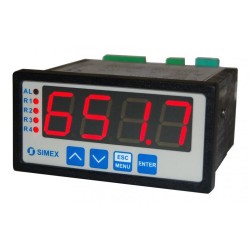
Advanced digital readouts for displaying conditioned inputs from pressure, temperature, position, flow & load sensors, featuring alarm & analogue control outputs.
Digital readout instruments are essential for displaying precise measurements from a variety of conditioned sensor inputs, including pressure transducers, temperature probes, position sensors, flowmeters, and load cells, and often provide critical control functionalities. These units are designed to process signals such as 4-20mA, 0-10V, or frequency, translating them into clear engineering units for applications ranging from industrial automation to research. Many models feature programmable alarm outputs for system alerts and continuous analogue outputs vital for modulating control elements like variable speed pumps or regulating valves. With flexible mounting options, including standard DIN panel slots for control cabinets, robust wall-mount versions for challenging environments, or direct sensor integration for local indication, these digital readouts offer adaptable solutions for accurate monitoring and control across diverse operational settings.
 MultiCon Multichannel Controller and Datalogger - Multifunctional digital controller & datalogger for processing the signal from an extensive range of sensors for the purpose of controlling a process or recording data.
MultiCon Multichannel Controller and Datalogger - Multifunctional digital controller & datalogger for processing the signal from an extensive range of sensors for the purpose of controlling a process or recording data. SRP-N118 Digital Alarm Indicator for Wall Mounting - An easy to install wall mounted digital display for use in high humidity or outdoor environments.
SRP-N118 Digital Alarm Indicator for Wall Mounting - An easy to install wall mounted digital display for use in high humidity or outdoor environments. ProSens Environmental Monitor and Controller - The ProSens environmental monitor and controller is an industrial interface instrument which integrates a transmitter, display, meter and controller functions in one box.
ProSens Environmental Monitor and Controller - The ProSens environmental monitor and controller is an industrial interface instrument which integrates a transmitter, display, meter and controller functions in one box. XSYS-0011 Portable Multichannel Data Logger with Optional Printer and Integrated Transport Case - The XSYS-0011 is supplied as a portable transport case with a CMC Multicon colour touchscreen data logger plus an optional MLP-149 portable printer integrated.
XSYS-0011 Portable Multichannel Data Logger with Optional Printer and Integrated Transport Case - The XSYS-0011 is supplied as a portable transport case with a CMC Multicon colour touchscreen data logger plus an optional MLP-149 portable printer integrated.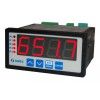 SRP94 Large LED Process Display Panel Mount Indicator - Four digit reading digital indicator for monitoring the signal from mA, volts or mV output sensors with settable alarms for switching fans, pumps or valves.
SRP94 Large LED Process Display Panel Mount Indicator - Four digit reading digital indicator for monitoring the signal from mA, volts or mV output sensors with settable alarms for switching fans, pumps or valves.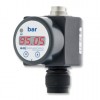 PA430 Add-On LED Display - Plug-on digital display for adding a local indicator to a pressure or liquid level sensor with a 4-20mA or 0-10Vdc output and optional ATEX IS approval.
PA430 Add-On LED Display - Plug-on digital display for adding a local indicator to a pressure or liquid level sensor with a 4-20mA or 0-10Vdc output and optional ATEX IS approval.
- Contaminated groundwater submersible plastic body 5 psi pressure transducer & display
- 100 bar pressure logging system with 10hz sampling rate and digital readout
- 200m deep well pump water level sensor, switch & display
- 10,000 psi hydraulic pressure transmitter and panel readout
- 270 degC gas pressure indicator
- Vacuum suction sensor & wall mount digital readout with switched contacts
- Dairy silo level sensor & display unit for reading content in litres
- Hydraulic puller-tensioner bar pressure to kilonewton load HMI display & logger
- 20,000 psi g digital pressure gauge with 4 to 20 mA output
- 25m borehole submersible pump level indicator and control switch with level sensor
- Pressurized tank level indicator with dual sensor input and Ethernet
- Marine fender air and seawater pressure sender and display
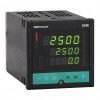 Digital Controllers - Panel and bench mount digital controllers serve as the brains of industrial automation, offering versatile solutions for precision control of various actuators and processes.
Digital Controllers - Panel and bench mount digital controllers serve as the brains of industrial automation, offering versatile solutions for precision control of various actuators and processes.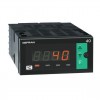 Alarm Relay Output Process Indicators - Enhance your process control with our advanced digital process indicators featuring configurable alarm relay outputs.
Alarm Relay Output Process Indicators - Enhance your process control with our advanced digital process indicators featuring configurable alarm relay outputs. Local Plug-On Digital Displays - Plug-on digital displays streamline the monitoring of field sensors, providing critical real-time data at the point of measurement, eliminating the need to rely solely on remote instrumentation control rooms.
Local Plug-On Digital Displays - Plug-on digital displays streamline the monitoring of field sensors, providing critical real-time data at the point of measurement, eliminating the need to rely solely on remote instrumentation control rooms.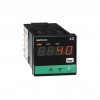 Strain Gauge Input Panel Meters - Digital panel meters with strain gauge inputs offer precise and adaptable solutions for monitoring and controlling various industrial and research processes.
Strain Gauge Input Panel Meters - Digital panel meters with strain gauge inputs offer precise and adaptable solutions for monitoring and controlling various industrial and research processes.
Find out more about Digital Readouts to determine which product options and capabilities will best meet your application requirements.
Digital readout instruments serve as crucial interfaces in a multitude of measurement and control systems, providing clear visual indication of process variables derived from conditioned sensor inputs. The integrity of the displayed measurement relies heavily on the quality of these inputs, which are often processed signals, such as amplified, linearized, or filtered outputs from sensors, ensuring accuracy and stability. These readouts are engineered to accept a diverse array of such conditioned signals, including standard current loops (e.g., 4-20mA), voltage signals (e.g., 0-10V, 0-5V), pulse, or frequency inputs, making them versatile for integration into existing or new industrial instrumentation setups, test benches, or research apparatus.
The versatility of digital readouts is evident in their ability to interface seamlessly with a wide spectrum of sensing technologies. For instance, they can be paired with pressure transducers to monitor hydraulic systems, gas pipelines, or tank levels, often displaying readings in user-defined engineering units like bar, psi, Pascals, or even calculated units such as liquid volume. When connected to temperature probes such as thermocouples (Types K, J, T, E, etc.) or RTDs (Resistance Temperature Detectors like Pt100 or Pt1000), these readouts become essential components in temperature monitoring and control systems for ovens, furnaces, environmental chambers, or plastic extrusion machinery. They are equally adept at processing signals from LVDT (Linear Variable Differential Transformer) position sensors or string pots for precise displacement, elongation, or position measurement in manufacturing automation, materials testing equipment, or structural health monitoring.
Furthermore, their compatibility extends to various types of flowmeters, including turbine, paddlewheel, or magnetic flowmeters, enabling the display of instantaneous flow rates or totalized flow in water treatment plants, chemical dosing skids, or fuel consumption monitoring. When interfaced with load cells or strain gauges, digital readouts provide accurate weight or force measurement crucial in industrial weighing systems, batching processes, material stress analysis, or dynamometers. The ability to configure scaling factors, decimal point placement, and engineering units directly within the readout simplifies the commissioning process and provides readily understandable information to operators and engineers.
Beyond simple display functionalities, many digital readouts are equipped with sophisticated control output capabilities, significantly enhancing their utility in automated systems and process loops. Programmable alarm outputs are a common and critical feature, allowing users to define multiple setpoints for key process parameters. When a measurement deviates from these predefined thresholds, the readout can trigger internal relays or solid-state outputs to control external devices such as warning lights, audible alarms, solenoid valves for emergency shutdowns, or interlock systems. This alarm functionality is vital for maintaining operational safety, protecting equipment, and ensuring process integrity, for example, by preventing overpressure in a vessel, detecting blockages in flow systems, or managing critical temperature limits in curing ovens.
In addition to discrete alarm outputs for on/off control, advanced digital readouts offer continuous analogue output signals, typically in the form of standardized 4-20mA current loops or 0-10V voltage signals. These outputs are directly proportional to the measured process variable and are invaluable for implementing proportional control or for retransmitting the measurement data to other devices like PLCs (Programmable Logic Controllers), SCADA (Supervisory Control and Data Acquisition) systems, or data loggers. For instance, a digital readout monitoring fluid level in a sump can provide a continuous analogue signal to a variable frequency drive (VFD) controlling a pump, thereby modulating the pump speed to maintain a consistent level. Similarly, in a temperature control application, this analogue output can precisely regulate the power to a heating element via a thyristor controller or modulate the opening of a control valve in a cooling circuit, enabling stable and efficient process management.
The physical integration of digital readouts into industrial environments and OEM equipment is facilitated by a variety of mounting configurations designed to suit diverse installation requirements and space constraints. The DIN size panel slot mounting (e.g., 1/8 DIN, 1/4 DIN) is a widely adopted standard, allowing for neat, secure, and high-density installation within control panels, operator consoles, and machinery interfaces, prevalent in manufacturing plants, process control rooms, and laboratory setups. For applications where panel mounting is not feasible or where a more localized indication is preferred, wall-mount options with robust enclosures, often offering enhanced environmental protection (e.g., IP65), provide a durable solution suitable for field installations, wash-down areas, or more exposed industrial settings. Furthermore, some digital readouts are designed to be compactly combined directly with a sensor, or in close proximity, creating an integrated instrument with a local digital readout display. This configuration is particularly beneficial for providing immediate, at-a-glance readings directly at the point of measurement, reducing wiring complexity, simplifying troubleshooting, and offering convenience for operators performing local checks or calibrations on standalone machinery, mobile equipment, or intricate test rigs.
